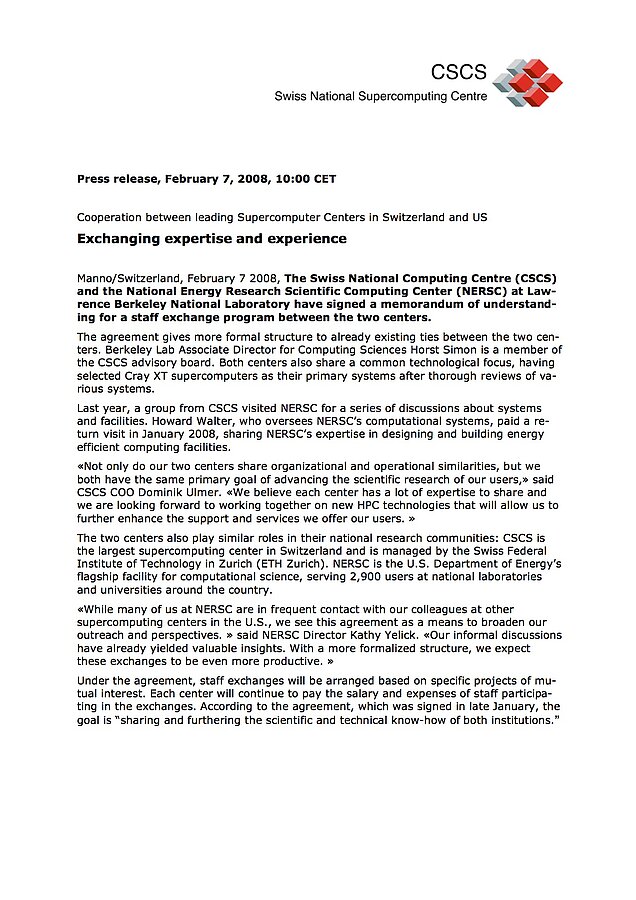Manno, 7 February 2008
The agreement gives more formal structure to already existing ties between the two centers. Berkeley Lab Associate Director for Computing Sciences Horst Simon is a member of the CSCS advisory board. Both centers also share a common technological focus, having selected Cray XT supercomputers as their primary systems after thorough reviews of various systems.
Last year, a group from CSCS visited NERSC for a series of discussions about systems and facilities. Howard Walter, who oversees NERSC’s computational systems, paid a return visit in January 2008, sharing NERSC’s expertise in designing and building energy efficient computing facilities.
«Not only do our two centers share organizational and operational similarities, but we both have the same primary goal of advancing the scientific research of our users,» said CSCS COO Dominik Ulmer. «We believe each center has a lot of expertise to share and we are looking forward to working together on new HPC technologies that will allow us to further enhance the support and services we offer our users. »
The two centers also play similar roles in their national research communities: CSCS is the largest supercomputing center in Switzerland and is managed by the Swiss Federal Institute of Technology in Zurich (ETH Zurich). NERSC is the U.S. Department of Energy’s flagship facility for computational science, serving 2,900 users at national laboratories and universities around the country.
«While many of us at NERSC are in frequent contact with our colleagues at other supercomputing centers in the U.S., we see this agreement as a means to broaden our outreach and perspectives. » said NERSC Director Kathy Yelick. «Our informal discussions have already yielded valuable insights. With a more formalized structure, we expect these exchanges to be even more productive. »
Under the agreement, staff exchanges will be arranged based on specific projects of mutual interest. Each center will continue to pay the salary and expenses of staff participating in the exchanges. According to the agreement, which was signed in late January, the goal is “sharing and furthering the scientific and technical know-how of both institutions.”
